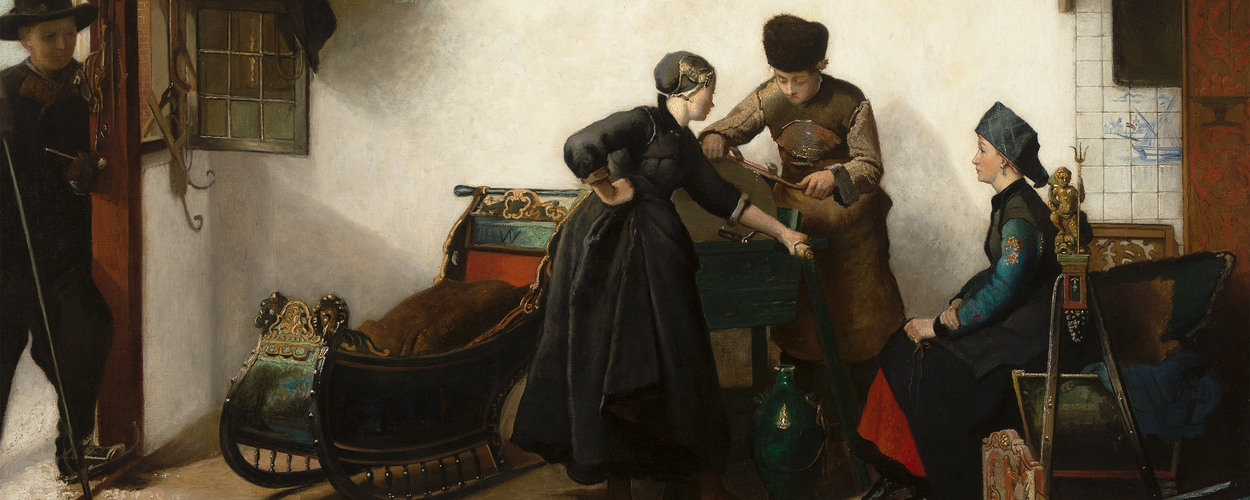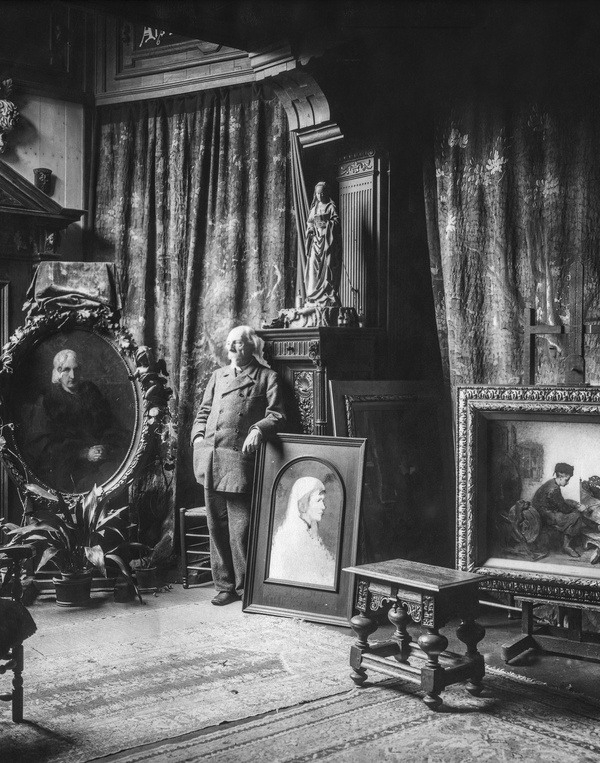In 2023-2024, the Fries Museum will dive into the personal life and art of the Leeuwarden-born artist Christoffel Bisschop (1828-1904) and his English wife Kate Bisschop-Swift (1834-1928). Their sources of inspiration, social environment and the work of contemporaries are also discussed. The exhibition shows how the Frisian artist uses the past as a great inspiration for the present. In particular, Bisschop becomes fascinated by the stubborn town of Hindeloopen.
forgotten painters
After the exhibition on the renowned painter Alma-Tadema, the Fries Museum is organising a new exhibition on another formidable yet forgotten painter: Christoffel Bisschop (1828-1904). Besides tranquil Hindelooper interiors, the artist also liked to paint women daydreaming by a window or reading a Bible, all with echoes of the past. Because of his powerful use of colour and radiant lighting effects, Christoffel was soon nicknamed the ‘painter of radiant effect’. Having worked hard in her native London, Kate had also developed as a successful artist. After marrying Christoffel in 1869 and living together in The Hague, Kate managed to become the first female working member of the Hague artists’ society Pulchri Studio. She specialised in simple interiors with mothers and young children. However, despite how popular they both were in their time, Christoffel and Kate have since been forgotten by the general public. The Fries Museum intends to change that with this major exhibition.


winter in friesland
Christoffel painted Winter in Friesland, one of his most iconic works, around 1876. The painting was acquired by the Fries Museum with the support of the Friends of the Fries Museum. The work portrays a young couple from Hindeloopen, patiently waiting for their skates to be sharpened so that they can finally take to the ice. Christoffel first exhibited the work in London, and then in Paris. It was an instant crowd pleaser, and was reproduced numerous times. His contemporaries called him a ‘dangerous neighbour’: other paintings close by paled in comparison to his colourful depictions.

longing for the past
Apart from their work as artists, Christoffel and Kate were avid antique collectors. They incorporated these in their art and in the interiors in their house ‘Villa Frisia’ in Scheveningen. Christoffel was especially drawn to the colourful Hindelooper style. From the 17th century onwards, ship’s captains from Hinderloopen brought luxury goods such as Chinese and Japanese porcelain and chintz from India to Friesland. Hindelooper women decorated their homes and clothing with this colourful fabric. However, prosperity declined in Hindeloopen by the end of the 18th century and women wearing the distinctive regional costume gradually disappeared from public view. Nevertheless, fascination for the small Frisian town was revived in the 19th century. Christoffel Bisschop found his niche there. His staged interiors, recreations of bygone times, were very successful. Abroad, the Hindelooper style even came to symbolise Dutch culture, and in 1878 the colourful Hindelooper room captured the hearts of visitors to the World Fair in Paris.


This exhibition is made possible by the Municipality of Leeuwarden, Frysk Blockbuster Fonds, Wassenbergh-Clarijs-Fontein Stichting, Prins Bernhard Cultuurfonds in the name of Marten Orges Fonds, Leeuwarder Ondernemers Fonds, Stichting Ritske Boelema Gasthuis, Meindersma-Sybenga Stichting, Stichting Sint Anthony Gasthuis, Stichting Het Nieuwe Stads Weeshuis, Stichting Siebolt Foundation, Boelstra Olivier Stichting and Stichting Gifted Art.
The Fries Museum is co-financed by the Province of Fryslân, the Ministry of Education, Culture and Science, the VriendenLoterij, Ir. Abe Bonnema Foundation and the friends of the Fries Museum.
